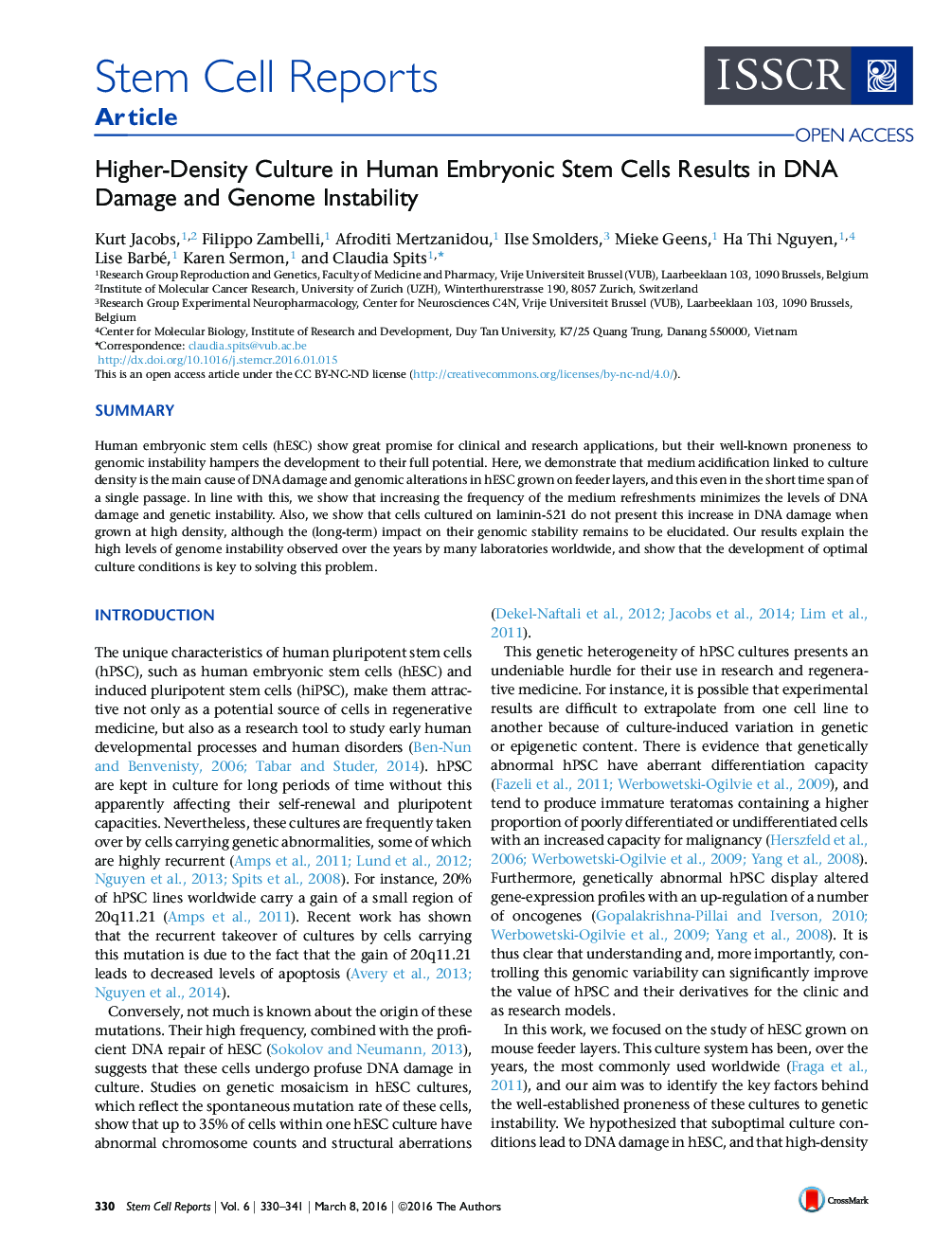| Article ID | Journal | Published Year | Pages | File Type |
|---|---|---|---|---|
| 2093308 | Stem Cell Reports | 2016 | 12 Pages |
•Increased culture density induces DNA damage and genomic alterations in hESC•Medium acidification due to lactic acid accumulation is the main driver•More frequent medium refreshments rescues genomic integrity in high-density culture•Laminin-521 reduces DNA damage but has no clear effect on genomic instability
SummaryHuman embryonic stem cells (hESC) show great promise for clinical and research applications, but their well-known proneness to genomic instability hampers the development to their full potential. Here, we demonstrate that medium acidification linked to culture density is the main cause of DNA damage and genomic alterations in hESC grown on feeder layers, and this even in the short time span of a single passage. In line with this, we show that increasing the frequency of the medium refreshments minimizes the levels of DNA damage and genetic instability. Also, we show that cells cultured on laminin-521 do not present this increase in DNA damage when grown at high density, although the (long-term) impact on their genomic stability remains to be elucidated. Our results explain the high levels of genome instability observed over the years by many laboratories worldwide, and show that the development of optimal culture conditions is key to solving this problem.
Graphical AbstractFigure optionsDownload full-size imageDownload as PowerPoint slide
